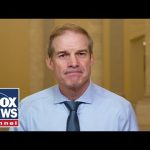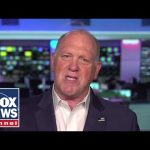The U.S. stock market has been on quite a rollercoaster ride lately, with the Dow Jones Industrial Average reaching soaring heights despite a cloud of uncertainty caused by President Trump’s tariff agenda. Investors seem to have adopted a “what goes down must come up” mentality. After a brief period of volatility, the market bounced back to all-time highs, raising eyebrows and prompting smiles among business folks. The news is buzzing with chatter about how those bumpy market days can lead to some of the best investment opportunities.
Some are claiming that the initial fears about tariffs and their potential impacts on the market may have been a bit overblown. Stock analysts have noted that the trade tensions, while worrying, are proving to be less disruptive than feared. The idea is that Trump’s tariffs are functioning somewhat like a value-added tax, similar to those imposed in many other countries. This has led some to suggest that what was once viewed as a looming threat might be providing a new framework for how businesses and the stock market operate moving forward.
While some experts express cautious optimism about the current financial landscape, others warn of possible trouble ahead. A noted investor mentioned that if tariffs were to become excessively punitive—say, around 35%—we could see major trouble for businesses and, consequently, the stock market. The good news? As long as tariffs remain at a more reasonable level around 10-13%, the market seems to be adapting. Businesses are reportedly gearing up to absorb these costs, potentially aided by innovations like artificial intelligence to boost productivity.
On the other hand, Democrats are sounding alarms about the impacts of Trump’s economic policies on small businesses. A few pundits have taken to the airwaves to voice concern about how fears and uncertainties, particularly regarding tariffs, could hurt both small business owners and their employees. This divide in perspective highlights just how politically charged the conversation about tariffs and economic policy can be.
As the Federal Reserve comes into the conversation, President Trump’s disagreements about interest rates could add another layer of complexity to the economic picture. Some analysts have suggested that now might be the time to cut interest rates to stimulate growth. Not everyone’s buying into that idea, though, as many recognize the longstanding independence of the Federal Reserve as a cornerstone of America’s financial stability. Regardless of these debates, one thing seems certain: the U.S. market remains an attractive place for investment, drawing interest from all around the globe. As investors adjust to the current climate, the stock market could continue to be a tantalizing, if unpredictable, arena for economic engagement.




